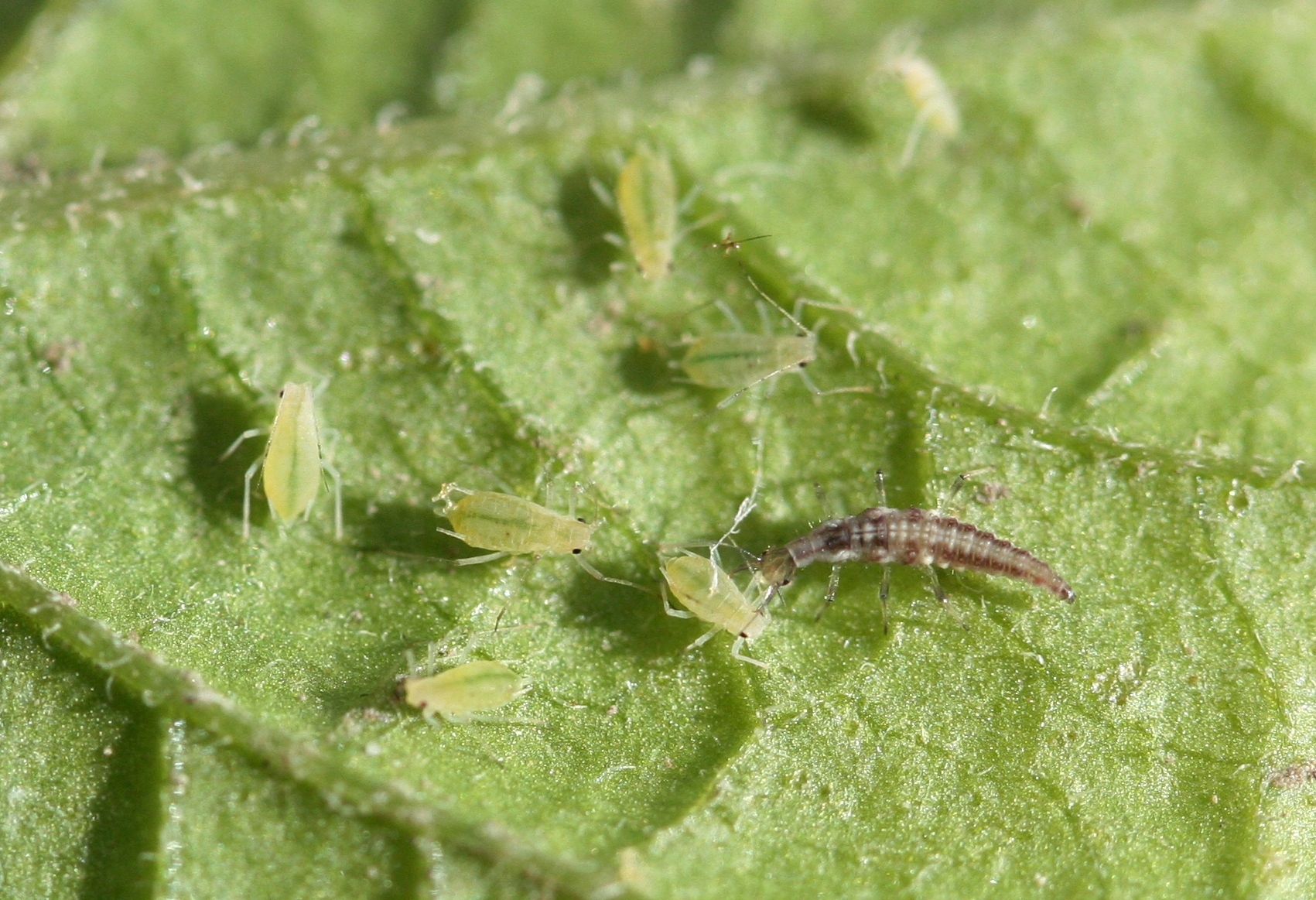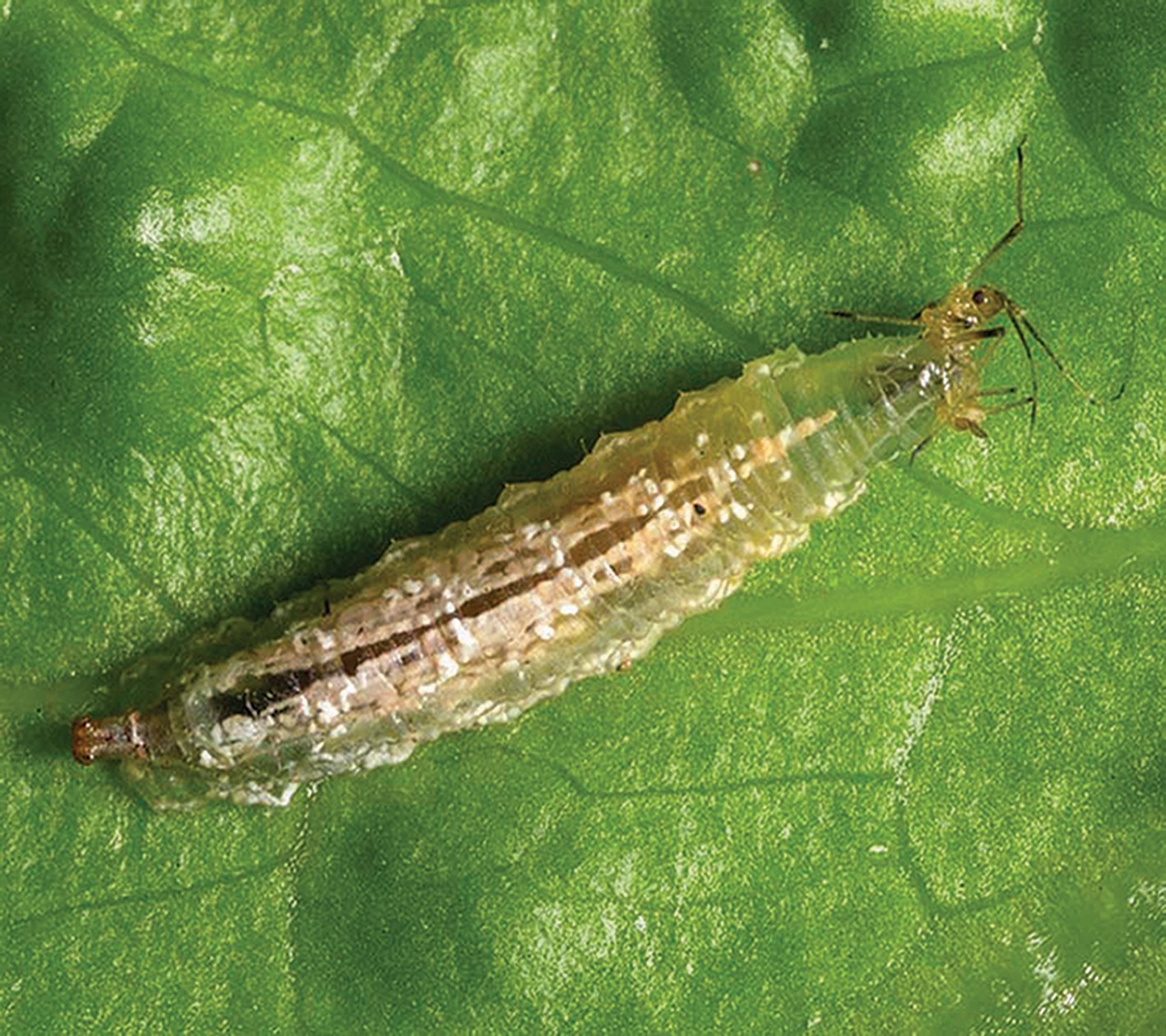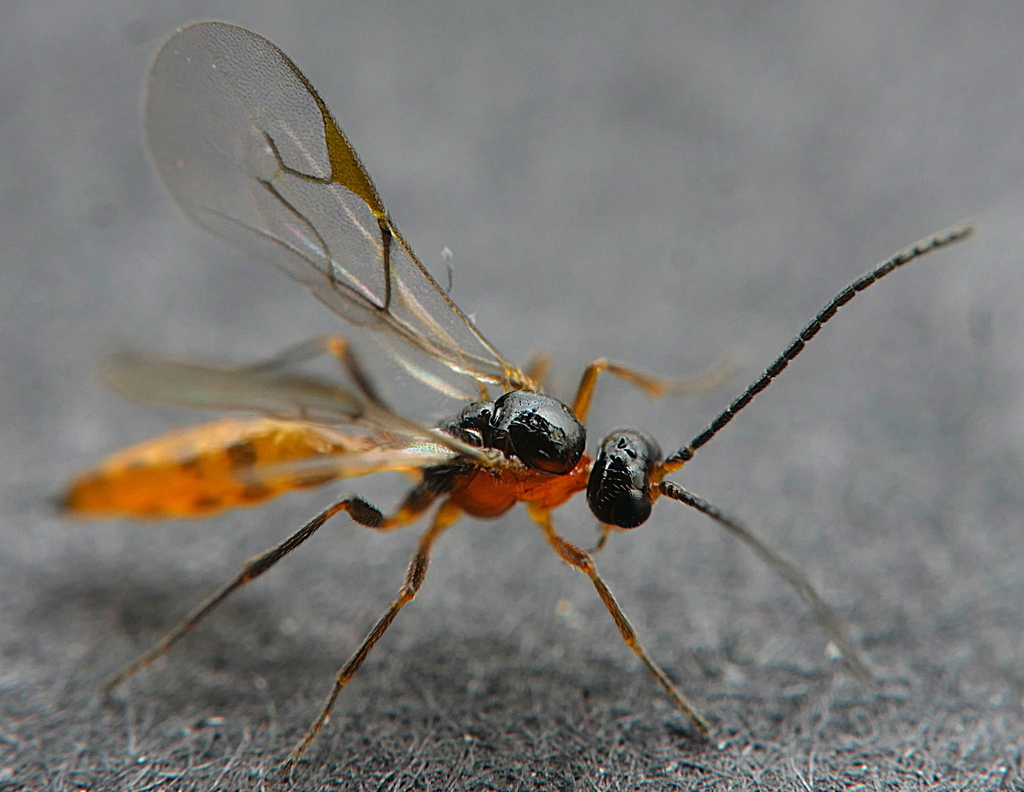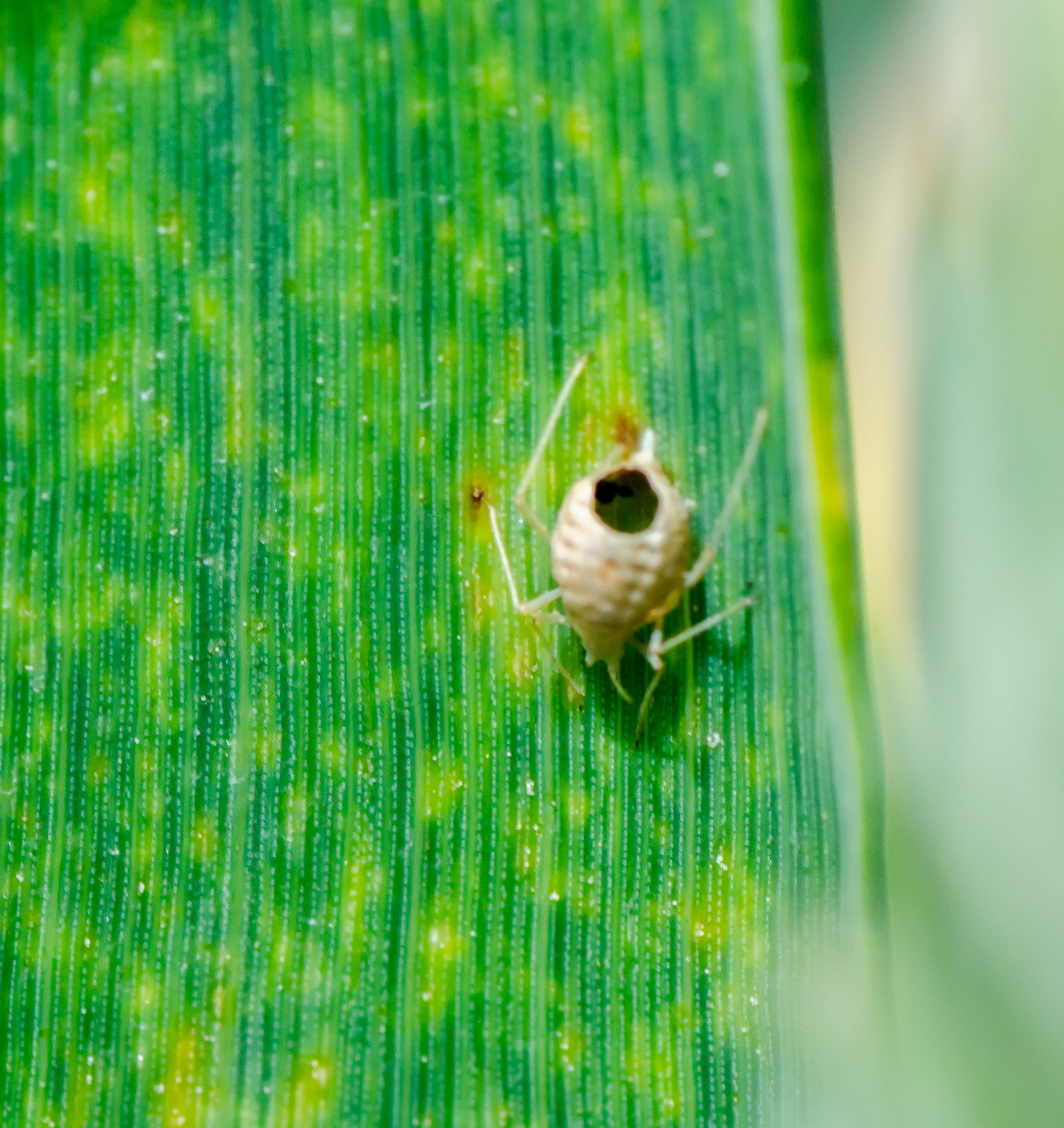Latest Aphid Report
Monitoring in Canterbury has now concluded for the year - it will begin again in April 2026. Southland monitoring continues, with aphid numbers there beginning to build up after a very slow start. Check individual location reports for more details.
The season was an unusual one in Canterbury. Aphid infestations were slow to arrive, but once they did, the increase in numbers was extreme. This was well after most (if not all) autumn-sown crops reached the safety of GS32, but spring crops would likely have benefited from foliar insecticides, depending on sowing date and location.
Note that FAR will not be monitoring spring-sown crops in the North Island this season due to operational constraints.
What Is The Risk To My Crop?
Data represents the average number of winged aphids captured per sticky trap over the monitoring period, as well as the number of beneficial insects. In order to mitigate risk, all aphids identified in this programme are assumed to be cereal aphids. Beneficial numbers, while useful as a guide, can vary hugely from farm to farm and paddock to paddock, as they are influenced by such factors as insecticide history, surrounding habitats such as native plantings, and microclimates.
What Are My Risk Considerations?
See All Weather Data
Forecast data should be considered when making decisions around foliar insecticides. If cold, wet weather is forecast, aphid numbers will fall naturally and an insecticide may not be needed. Take into account the number of aphids present and the amount of beneficial species as well.
See MoreAphid Numbers
When numbers of winged aphids are high, there is an elevated risk of primary infection by YDV, as well as spread within the crop. In particular, look for a recent increase in aphid numbers that could indicate the onset of a risk period. Look for wingless aphids in the crop on warm, dry days.
Natural Predators
Aphid numbers can be controlled naturally by allowing the numbers of beneficial insects (e.g. ladybirds and parasitic wasps) to increase. While natural predator numbers tend to lag behind aphid numbers by a few weeks, a consistent increase in aphid numbers without significant beneficials can indicate that a foliar insecticide could be warranted.
Cultural Control
Be aware of areas surrounding your paddocks that may act as alternative hosts for aphids such as trees and hedges. Sowing into good, weed-free soil also removes alternative hosts where aphid infestations could originate.
Chemical Spray
If all other factors point to an increased risk period for YDV infection, consider using a foliar insecticide. Not all aphicides are created equal; some are also lethal to beneficial insects, which could lead to a greater problem down the road.
Why Monitor?
YDV transmitted by aphids is an economically important virus in New Zealand cereals, causing up to 30% yield loss in some years. There are a number of ways to prevent yield loss due to YDV; most aim to reduce the risk of aphid colonisation and spread, and often rely on the use of seed treatment and foliar insecticides. As a result, cereal growers can spend around $100/ha, annually, controlling aphids to prevent the spread of the virus. However, alternative approaches, such as Integrated Pest Management (IPM), which combines the use of natural predators and parasitoids with cultural controls and selective chemistry as required, are available. Making use of regional data or, even better, monitoring your own crops, can save time and money by letting you only apply insecticide when it is needed.
Monitoring and Identification
Insect identification can be challenging, but with a bit of practice and a magnifying glass, growers and industry reps can determine friend from foe. FAR is here to support growers interested in learning more about monitoring, and offers field walks, workshops or help with sticky trap or insect photo identification. Use the provided links for further information.
What Are Beneficials?
Let the good guys do the work!
A wide variety of beneficial predators and parasites contribute to pest control in arable cropping systems. Some are resident predators that live in the crop all year and play an important role in helping to control establishment pests (pests that inflict the most damage while the crop is getting established). Others are transient and only arrive in a crop if there is a pest present to eat.
Predators (such as brown lacewings) are relatively large (adults 9-10mm) and eggs are white and fairly obvious on a green leaf. So predators are quite obvious and their impact is immediate as they kill and eat their prey. However, parasitoids (insects that parasitise other insects)are more difficult to see as they live most of their lives hidden inside the bodies of the hosts. The easiest stage to see is the pupal stage when the wasp takes over the body of the host aphid and puffs it up to make its own cocoon (a "mummy"). Adult wasps that parasitise aphids are small and active but can be caught on sticky traps.
When broad spectrum chemicals are withdrawn from a farming operation, it may take a while for the resident beneficial populations to build up enough to contribute to pest control, whereas transient beneficial insects may fly into a paddock and maintain a presence if no broad-spectrum chemicals are being used. IPM aims to increase populations of resident beneficial species and make the best use of transient beneficial species.
Predators
There are several species of insect that feed directly on aphids - either the adults or larvae or sometimes both can consume large numbers of aphids in ideal conditions. Hoverfly adults, for instance, don't eat aphids, but the larvae do and can consume very large amounts of aphids and are thus very important for biological control.

Ladybird Coccinellidae spp.

Brown lacewing Micromus sp.

Hoverfly Melanostoma sp.

Ladybird larva

Lacewing larva feeding on aphids

Hoverfly larva
Parasites
Parasitic Wasps lay eggs inside live aphids, which then hatch, with the aphid providing a food source for the developing larvae. The most obvious sign that wasps are keeping aphid populations in check is the presence of hollowed-out remains of aphids, known as "aphid mummies".

Parasitic wasp Aphidius sp.

"Aphid mummy". Note the hole where the adult parasitic wasp has emerged.
Aphids and YDV
Aphids can be born either with or without wings. Winged aphids may be present throughout the year, but mostly in the warmer months. These winged (alate) aphids are responsible for primary infection of YDV when they fly into the crop carrying the virus within their bodies and begin feeding on the sap of the crop. Secondary infection occurs when aphids reproduce asexually within the crop, giving birth to live (usually wingless) young. Aphids can also reproduce sexually, laying eggs which can overwinter in the paddock or in nearby plants (weeds, hedges, trees, etc.).
Growth Stages
Cereal crops are most susceptible to yield losses caused by aphid-vectored viruses before Growth Stage (GS) 32. Insecticide-coated seed generally confers protection to autumn-sown crops until GS21 (tillering). FAR's guide to determining cereal growth stages is provided in the link.
Insecticide Considerations
- Check the product label
- Take growth stage into account
- Consider impact on beneficials
- Have you just used a broad spectrum insecticide?
- Will there be time for beneficials to build up again or is there already a healthy population?
- Seed dressings may provide initial cover
- How long will the insecticide be effective?
- What are your MRLs?
- Your risk period will be different after spraying
- You may need to go and do monitoring after spraying, too.
- Consider calibration of spray gear
- Worker health and chemical toxicity
- There may be more options available
Insecticide Options
It is important to be mindful of the effect that foliar insecticides have on beneficial insects. Selective insecticides such as Pirimor® and Transform™ are generally considered to be softer on beneficial insects than other, broad-spectrum insecticides. Check the label and other information before spraying.
Ensuring the survival of beneficial insects can mean that aphids are slower to return to problem levels after a spray event. Parasitic wasps are especially important in controlling early infestations of cereal aphids.
Not all broad-spectrum chemicals kill beneficial species directly. Secondary poisoning of beneficial species occurs when they consume the pest which has come into contact with or ingested the insecticide.
Tau-fluvalinate
MAVRIK
Mode of Action: Synthetic pyrethroid. Acts primarily as a contact poison by interfering with the central and peripheral nervous system.
IRAC Group: 3A
Beneficial Impact: Highly toxic to beneficial insects - safe on honeybees.
Spray Informationlambda-cyhalothrin
KARATE ZEON, CYHELLA, HALEX CS, LAVRON, TAEKWANDO 250 CS
Mode of Action: Synthetic pyrethroid. Primarily a contact and stomach poison with direct effects on the nervous system of susceptible insect pests.
IRAC Group: 3A
Beneficial Impact: HIGH
Spray Informationsulfoxaflor (Isoclast™ active)
TRANSFORM
Mode of Action: Sulfoxamine
IRAC Group: 4C
Beneficial Impact: Medium. Some evidence that certain beneficial species will survive application.
Spray InformationPirimicarb
APHIDEX, PIRIMOR, PIRITEK, PROHIVE
Mode of Action: Carbamate. A fast-acting contact insecticide which is partially systemic and has strong fumigant action within the crop.
IRAC Group: 1A
Beneficial Impact: Low. Will affect some parasitic wasps if they are directly sprayed.
Spray InformationChlorpyrifos
Multiple generics
Mode of Action: Organophosphate. Has contact and vapour action and also acts as a stomach poison when ingested. Acts directly on the nervous system of susceptible pests.
IRAC Group: 1B
Beneficial Impact: High impact on all insects, including beneficials.
Spray Information
